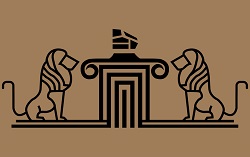Egyptian Marbles – Popularity that Transcends Centuries
Man and marble is a relationship that dates back to centuries. The marble quarrying and processing industries are one of the earliest industries known to man. As early as 5,000 years ago, the Egyptians had discovered 40 different ornamental stones. Their personal favourites were granite and Alabaster marbles, among a few others. Some of the historians even go as far as to say that early Greek and Romans had learnt the skills of natural marble quarrying and its processing from the Egyptians, too.
Natural Reserves of Marbles in Egypt
Egypt has abundant natural reserves of marble and granite. As early as 2700 B.C., the Egyptians would use granite to construct their temples and other famous monuments. Soon enough, the Romans acquired the technical expertise to mine natural stones, which later was passed on to Italy. Eventually, Italy became the world’s biggest supplier of natural stone due to the extent of its deposits.
However, over the centuries, marble has become a vital part of cultures and traditions. It exudes the essence of old-world charm, which carries an eternal appeal. The diverse texture of slabs and marble tiles creates a vibrant, rich and subtle feel. Marble surfaces have adorned the walls and architecture of famous architectural wonders and palaces.
In the modern era, due to their durability and beauty, they are perceived as high-quality material for commercial applications.
Famous Egyptian Marbles
Egypt has acquired global recognition for some of its granite variants. Sahara Brown, Rosa Hoody and Rosa Kali are some of the popular ones in the industry. Interestingly, the demand for marble products varies, depending on its commercial application. For instance, granite is heavily used in funerary art, cladding and kitchens’ surfaces.
The price points of Egyptian marbles are comparatively lower than Chinese and European marble. This is an advantage for Egypt since its cost of utilities and human resources are remarkably more moderate than in these markets. The lower price points greatly benefit its global positioning for commercial and residential uses.
The Egyptian marbles are immensely popular for their visual appeal and high lustre. Egyptian marble slabs do not require chemical reinforcement while other marbles do before reaching the market. For the past one-hundred years, Egyptian marble tiles have remained in vogue.
Rise of Beige Marble – An Egyptian Specialty
Egypt has natural reserves of a variety of natural stones. This includes the likes of slate crystalline limestone, alabaster, granite, marble and other different ornamental stones. For the most part, marble variants found in Egypt have a beige colour with either dark or light shades. Egypt has acquired global popularity for its beige colour marble variety. These consist of Silvia, Imperial Honey, Sunny, Rosa Cream and Galala. The beige variant is ideal for cladding indoors, outdoor and flooring residential/commercial spaces. Interestingly enough, the beige marble comprises of 15% of overall marble consumption, second to grey marble.



